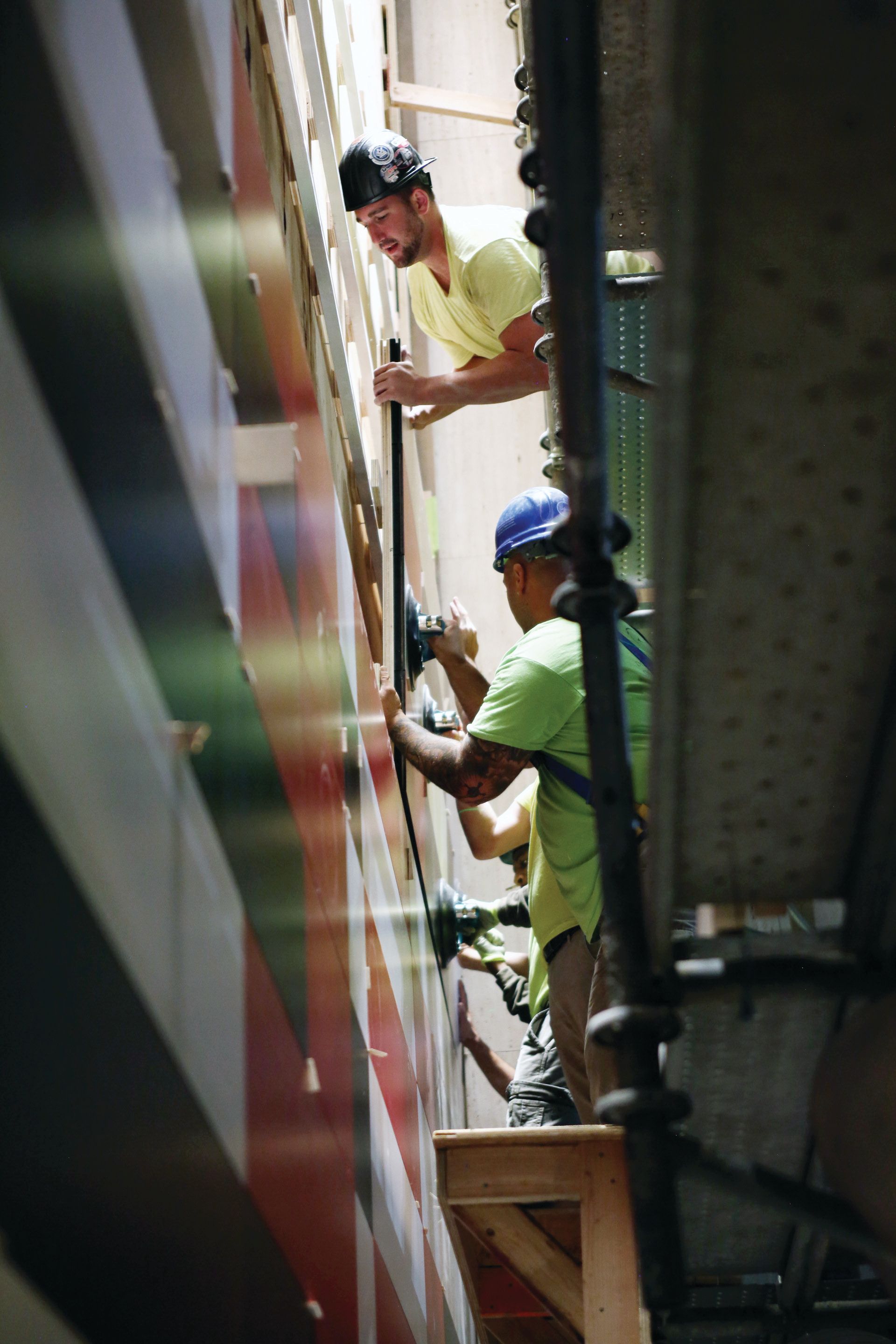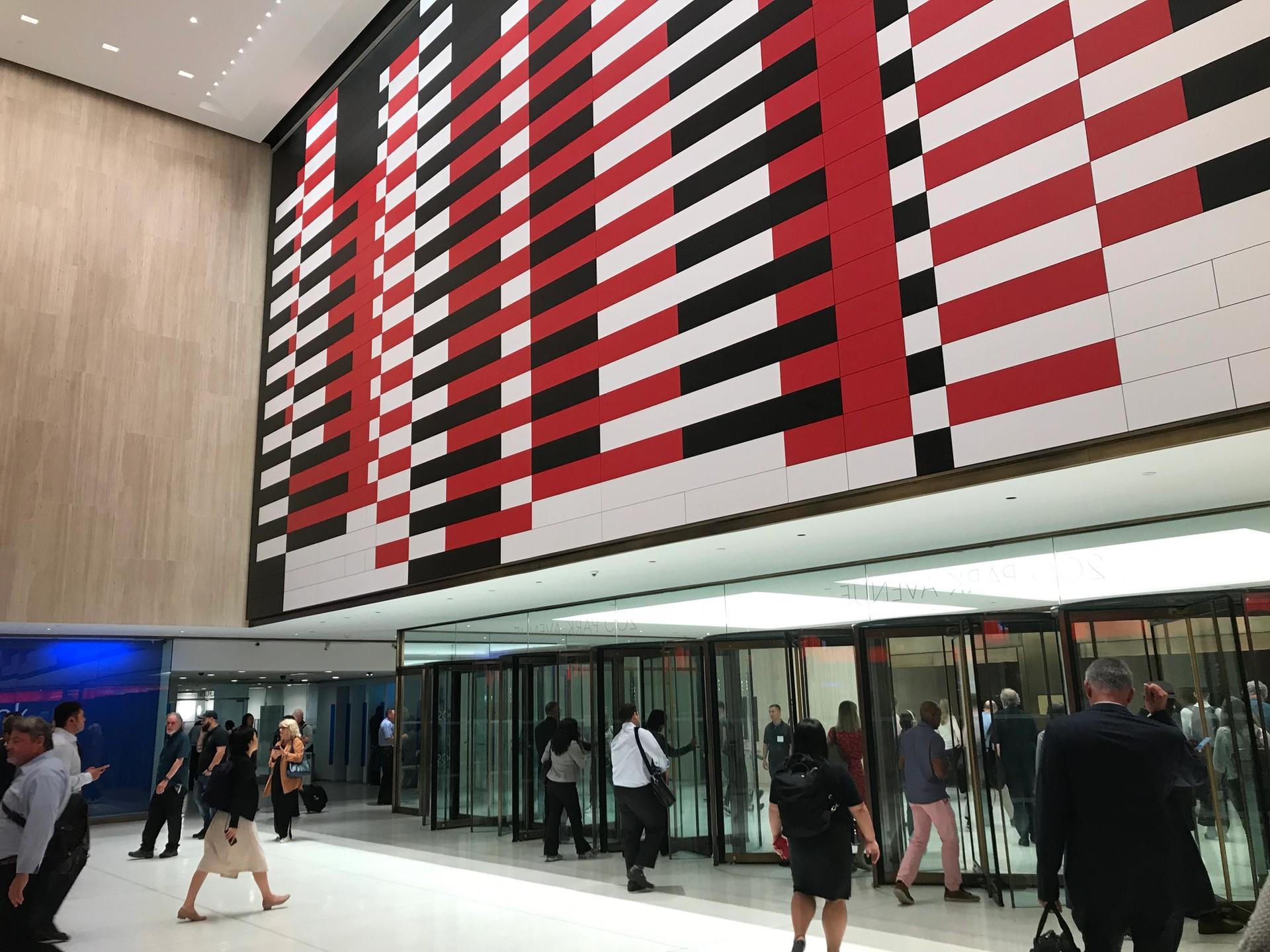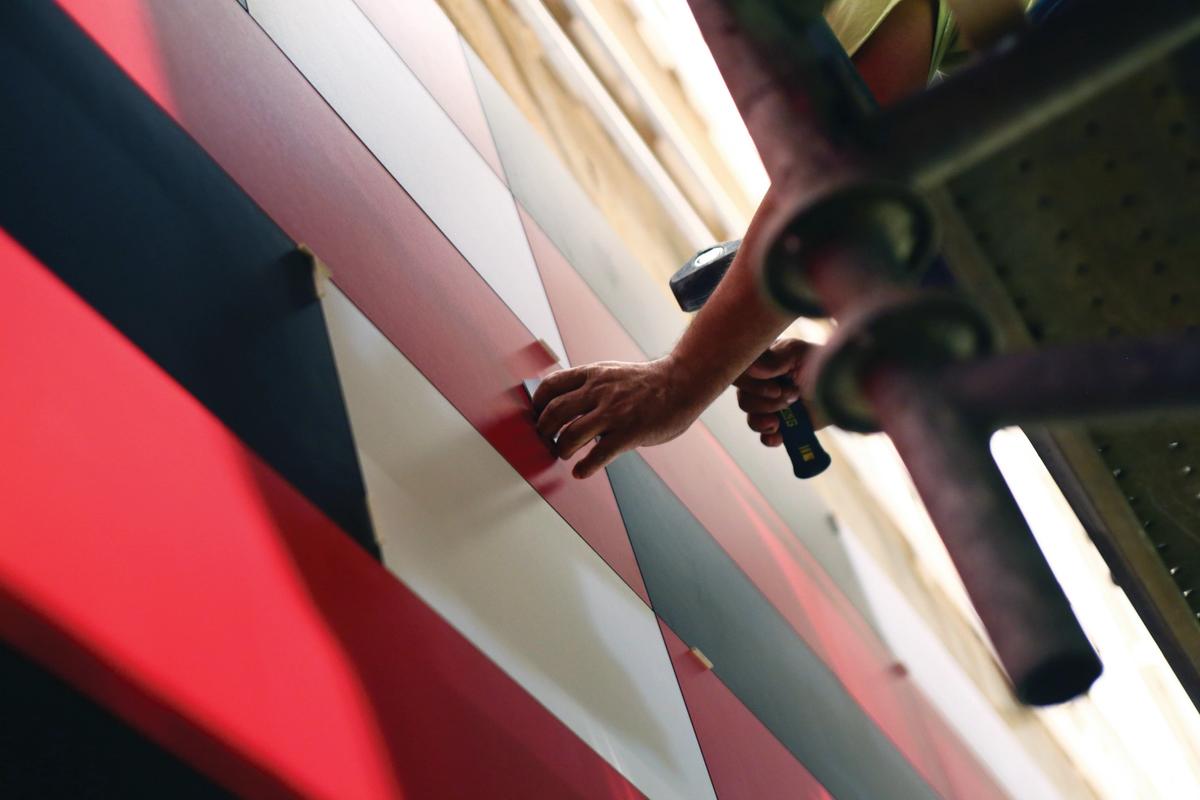There was public outcry when Josef Albers’s monumental mural, Manhattan, which for decades hung in the Modernist lobby of the Walter Gropius-designed 200 Park Avenue, better known as the MetLife building, was removed during a renovation in 2000. But nearly 20 years later, and in time for the Bauhaus’s 100th anniversary, the mural has returned home, recreated anew following the artist’s exacting specifications, and with the involvement of the Josef and Anni Albers Foundation.
“It’s reborn,” says the New York architect Raúl de Armas, whose firm MdeAS is restoring the MetLife building for its new owner, the real estate companies Irvine and Tishman Speyer. Describing himself as a “devout Modernist”, de Armas always planned to return the mural to its rightful place from the moment he took on the project. “There was never a drawing we did that didn’t involve the mural,” he says. His proselytising of the artwork’s importance as an integral element of Gropius’s design helped secure its return, and a photograph of the original mural remained taped up on the wall of the contractor’s offices during the installation to remind everyone involved of the history being remade. “I was lucky enough to see the building shortly after it was finished [in 1963, as the HQ of Pan American Airways], and that mural took my breath away,” de Armas says. “To see it gone left a big void.”
The mural was removed as part of a renovation MetLife did just a few years before it sold the building to the current owners. “While we appreciate its importance in the art community, it just doesn’t work for us anymore,” a spokesman for MetLife told the New York Times at the time. The company had previously removed another artwork commissioned by Gropius, a pair of aluminium screens by the Hungarian artist György Kepes, while a wire sculpture by Richard Lippold has survived all the architectural alterations. “I wish there was a way in this city, where there are so many rules [around construction and urban planning], that something this important could be removed without impunity and no one being able to say anything about it,” de Armas says.

Josef Albers, Manhattan (1963), formica panels installed in the Pan Am Building, New York Image courtesy of The Josef & Anni Albers Foundation
“When the mural was taken down it was reproduced on the front page of the New York Times and I was mouthing off, as you would imagine, about how terrible it was that this great public masterpiece was being destroyed,” says Nicholas Fox Weber, the executive director of the Albers Foundation. Several efforts to find a new location for it in New York—in Penn Station or Baruch College, on the side of the New School, at Santiago Calatrava’s World Trade Center transit hub—were all unsuccessful. Its restoration was further complicated when the grid-like Formica panels that made up the mural were found to contain asbestos, and most of the original materials were sent to an Ohio landfill in 2012.
When art lives on
But as Albers once wrote: “No work of true art is ever destroyed.” The foundation held on to a few original panels for reference, and also had Albers’s instructions on how to refabricate the mural. When de Armas approached the foundation about recreating the work as part of the current renovation, they were able to match the colours and materials—minus the asbestos—exactly. The 486 new red, black and white laminate boards, joined in 42 panels, were built at All Craft Fabricators on Long Island, and the mural was carefully installed in the lobby over a few sweltering weeks in August. It was unveiled on 23 September, as the UN General Assembly held a historic Climate Summit in New York.

“It’s mind-blowing,” architect Raúl de Armas says of seeing the mural back in its niche, as fresh and bright as it appeared when it was first installed. “Finally, it’s in the right place, in one piece. It’s almost miraculous that we were able to get it done.” © Casey Fatchett
“We were able to create an even better space for the mural,” de Armas says, by taking part of the garage to add 25ft to the wall on which the 55ft-wide by 28ft-high work hangs. Now framed by white travertine columns and recessed lighting, which replace the dark grey marble that once made the lobby seem dim, the mural once again greets commuters heading downstairs to Grand Central Station. “It’s mind-blowing,” de Armas says of seeing the mural back in its niche, as fresh and bright as it appeared when it was first installed. “Finally, it’s in the right place, in one piece. It’s almost miraculous that we were able to get it done.”
Rob Speyer, the CEO and president of Tishman Speyer, says: "The Albers mural is part of the DNA of 200 Park Avenue and we are incredibly excited that it will once again be the focal point of its lobby."
Weber is also excited to have the work, which Albers once described as “my homage to the city of New York”, return to its original location. “From the moment Anni and Josef arrived in New York in 1933, Manhattan was absolutely thrilling to them. They loved the energy of the city. They loved the grid. They marvelled at the crowds and the museums and the general energy,” Weber says. “Josef was delighted to know that as many as a quarter of a million people a day passed underneath that mural. The idea that a little bit of his energy entered their lives was a great thing for him.”

“Josef was delighted to know that as many as a quarter of a million people a day passed underneath that mural. The idea that a little bit of his energy entered their lives was a great thing for him,” says Nicholas Fox Weber © Helen Stoilas


